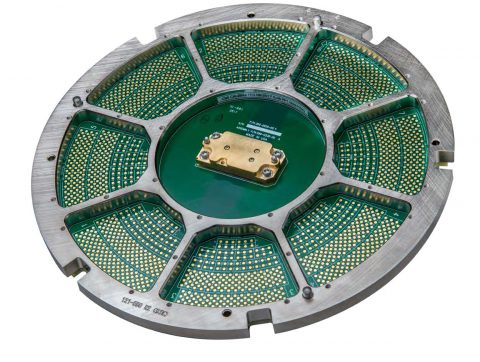Today, it seems as though every device is connected to another. The connected world, as such, is driving the growth of RFICs, including filters, PAs, switches for the front-end and WiFi, Bluetooth, and combo devices at the SoC level.
Traditionally, device manufacturers have deployed probe cards that support high frequency signals (>3 GHz) or mechanically robust multi-site probe cards. But not both. The ingredients needed to get to a mechanically robust, frequency-capable, multi-site probe card have been around for years, but there have been gaps. While vertical MEMS probes with membrane space transformers are available and great for DC applications, they are not quite what we need for high parallelism RF test. So, what’s needed to have a complete solution?
- Add a metal layer to the guide plates
- Connect these metal layers to GND
- Connect all the GND probes to this metal layer
- Isolate all other probes from this metal layer
This gives us metal and ceramic guide plates, which delivers several benefits:
- Enjoy the capacitance that the metal layer adds, and the balancing effect to the typically inductive vertical MEMS probe
- Further enjoy the ground plane between the die and space transformer
- Continue to enjoy the robust mechanical characteristics of ceramic guide plates and vertical MEMS (long lifetime, accurate feature placement, low force, etc.)
We’ve brought together this new combination of ingredients to create a robust, multi-site probe card for production RF test – the Pyrana Probe Card. Pyrana probe cards integrate robust Katana MEMS probe technology with Pyramid Probe’s membrane technology, delivering a previously unavailable combination.
Measurement Accuracy
- Excellent signal integrity
- Minimum contact resistance
- Repeatable results
High Test Efficiency
- Straightforward cleaning and maintenance
- Minimum pad damage
- Minimum contact force
- Easily replaceable probes
Low Cost of Test
- Long probe lifetime
- Individually replaceable probes
Versatility
- Pyrana offers the potential of generic PCBs to support families of similar devices
- Katana-RF accommodates large die, unique die layouts
The new probe head architecture in the Pyrana Probe Card addresses a major gap by providing RF signal performance to 10 GHz with vertical MEMS mechanical performance. For more information, download the data sheet.
